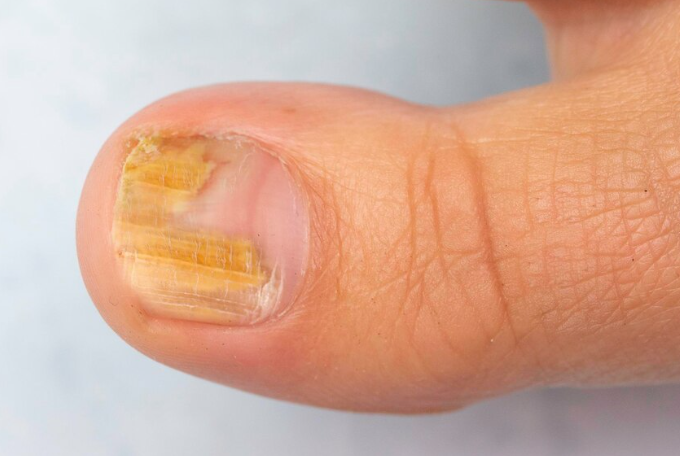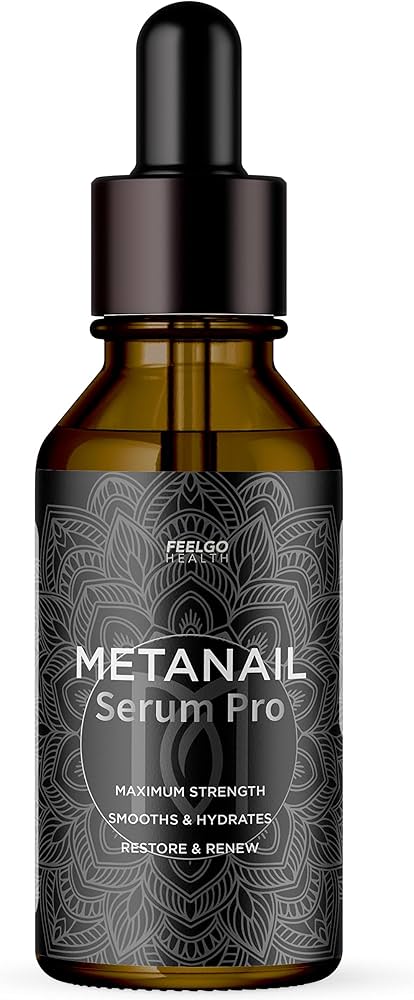Nail Health: Common Problems and How to Keep Your Nails Healthy
Nails might seem like a small part of your body, but they play an important role in your overall health and appearance. If you take a moment to think about it, nails can tell a lot about your well-being. From peeling nails to discolored ones, they can give signs that something is off. In this post, we will look at the common problems people have with their nails, and how to keep them healthy and strong, all explained in simple and clear steps.

Why Nail Health Matters
Your nails are made of a protein called keratin, the same thing your hair is made of. The health of your nails can be affected by your overall health, lifestyle, and how well you take care of them. For example, weak nails can be a sign of a vitamin deficiency or even a more serious health problem.
When your nails are healthy, they look smooth, even in color, and strong. But when your nails aren’t taken care of, they can get dry, break easily, or even get infected. The key to nail health is taking good care of them, just like you take care of your skin or hair.
Common Nail Problems
Let’s start by looking at some of the common problems that can affect your nails:
1. Brittle Nails
Brittle nails are weak and break or split easily. This can be caused by frequent washing, exposure to harsh chemicals, or even the dry winter air.
2. Yellow Nails
Yellow nails can be a sign of nail polish overuse, a fungal infection, or even a more serious condition like diabetes or lung disease.
3. Peeling Nails
If your nails are peeling, it might be due to frequent wetting and drying, like when you wash dishes or clean. Peeling nails can also happen if your nails are too dry or you are low in iron.
4. White Spots
White spots on your nails are often harmless and can happen due to minor injuries or bumps to the nail. However, they can also be a sign of a zinc or calcium deficiency.
5. Ridges
Nail ridges are common and usually harmless, especially vertical ridges that run from the base of your nail to the tip. Horizontal ridges, on the other hand, could indicate a more serious issue like malnutrition or an injury.
6. Nail Fungus
A fungal infection can make your nails thick, discolored, and brittle. Nail fungus often happens when your nails are in a moist environment, like sweaty socks or shoes, for too long.

"Keep your nails strong, vibrant, and healthy—because self-care starts from the tips of your fingers!"
How to Keep Your Nails Healthy: Step by Step
Now that you know some common nail problems, let’s go over how you can keep your nails healthy with some simple tips.
Step 1: Keep Your Nails Clean and Dry
The first and most important step to healthy nails is keeping them clean. Dirt and bacteria can get under your nails, which can lead to infections. It’s also important to keep your nails dry, as wet nails are more prone to breaking and fungal infections.
How to do it:
- Wash your hands regularly and dry them well, especially after washing dishes or doing housework.
- When cleaning, wear gloves to protect your nails from water and chemicals.
Step 2: Trim Your Nails Regularly
Just like cutting your hair helps it stay healthy, trimming your nails helps them grow stronger and reduces the chances of breaking.
How to do it:
- Use clean, sharp nail clippers or scissors.
- Cut your nails straight across and round the tips in a gentle curve to prevent ingrown nails.
Step 3: Moisturize Your Nails
Just like your skin, your nails need moisture. Dry nails can crack, peel, or become brittle.
How to do it:
- Use hand lotion or nail oil regularly, especially after washing your hands.
- Rub the lotion into your nails and cuticles.
Step 4: Avoid Biting Your Nails
Biting your nails can damage the nail bed, making your nails more prone to infections. Plus, it’s not a good habit for hygiene.
How to do it:
- Try to keep your nails trimmed and filed so you aren’t tempted to bite them.
- If you find it hard to stop, there are special nail polishes with a bitter taste that can discourage nail biting.
Step 5: Use Gentle Nail Products
Harsh nail polishes, removers, and treatments can weaken your nails over time. Acetone-based nail polish removers, in particular, are very drying to your nails.
How to do it:
- Use nail polishes and treatments that are free from harsh chemicals like formaldehyde or toluene.
- Opt for a non-acetone nail polish remover when possible.
Step 6: Eat a Balanced Diet
Healthy nails start from within. A lack of vitamins and nutrients can lead to weak or discolored nails.
How to do it:
- Eat foods rich in biotin, like eggs, nuts, and whole grains, to help strengthen your nails.
- Make sure you are getting enough vitamins and minerals like iron, zinc, and vitamin E, which all play a role in nail health.
Step 7: Give Your Nails a Break from Polish
Wearing nail polish all the time can dry out your nails and make them brittle or discolored.
How to do it:
- Give your nails a break from polish every few weeks to let them breathe and recover.
- If you use gel or acrylic nails, try to space out how often you use them to avoid weakening your natural nails.
Step 8: Watch for Signs of Infection
Keeping an eye on your nails can help you spot problems early. If you notice redness, swelling, or pain around your nails, it could be a sign of infection.
How to do it:
- If you see signs of an infection, like redness or pus, it’s important to see a doctor for proper treatment.
- Avoid picking at your cuticles or pulling hangnails, as this can introduce bacteria and lead to infection.
Step 9: File Your Nails Properly
Filing your nails helps keep them smooth and prevents splitting. However, if you file them the wrong way, you can cause more damage.
How to do it:
- Use a soft nail file and file in one direction, not back and forth, as this can cause the nail to split.
- Be gentle when filing to avoid over-filing your nails.
Step 10: Stay Hydrated
Water is essential for overall health, including your nails. Dehydration can make your nails dry and brittle.
How to do it:
- Drink plenty of water throughout the day to keep your nails hydrated and healthy.
Additional Nail Care Tips
Here are some extra tips to keep your nails looking their best:
Don’t use your nails as tools. Avoid using your nails to open packages or scratch off labels, as this can cause them to break.
Be mindful of salon hygiene. If you get manicures or pedicures, make sure the salon is clean and that the tools are properly sanitized to avoid infections.
Use a protective base coat. Before applying nail polish, use a base coat to protect your nails from staining and drying out.
Conclusion
Taking care of your nails doesn’t have to be complicated. By following these simple steps, you can keep your nails healthy, strong, and looking their best. Remember that your nails are an important part of your body, and they deserve the same care and attention that you give to your skin and hair. Whether you’re dealing with brittle nails, ridges, or just want to prevent problems before they start, these easy-to-follow tips will help you maintain healthy, beautiful nails year-round.
